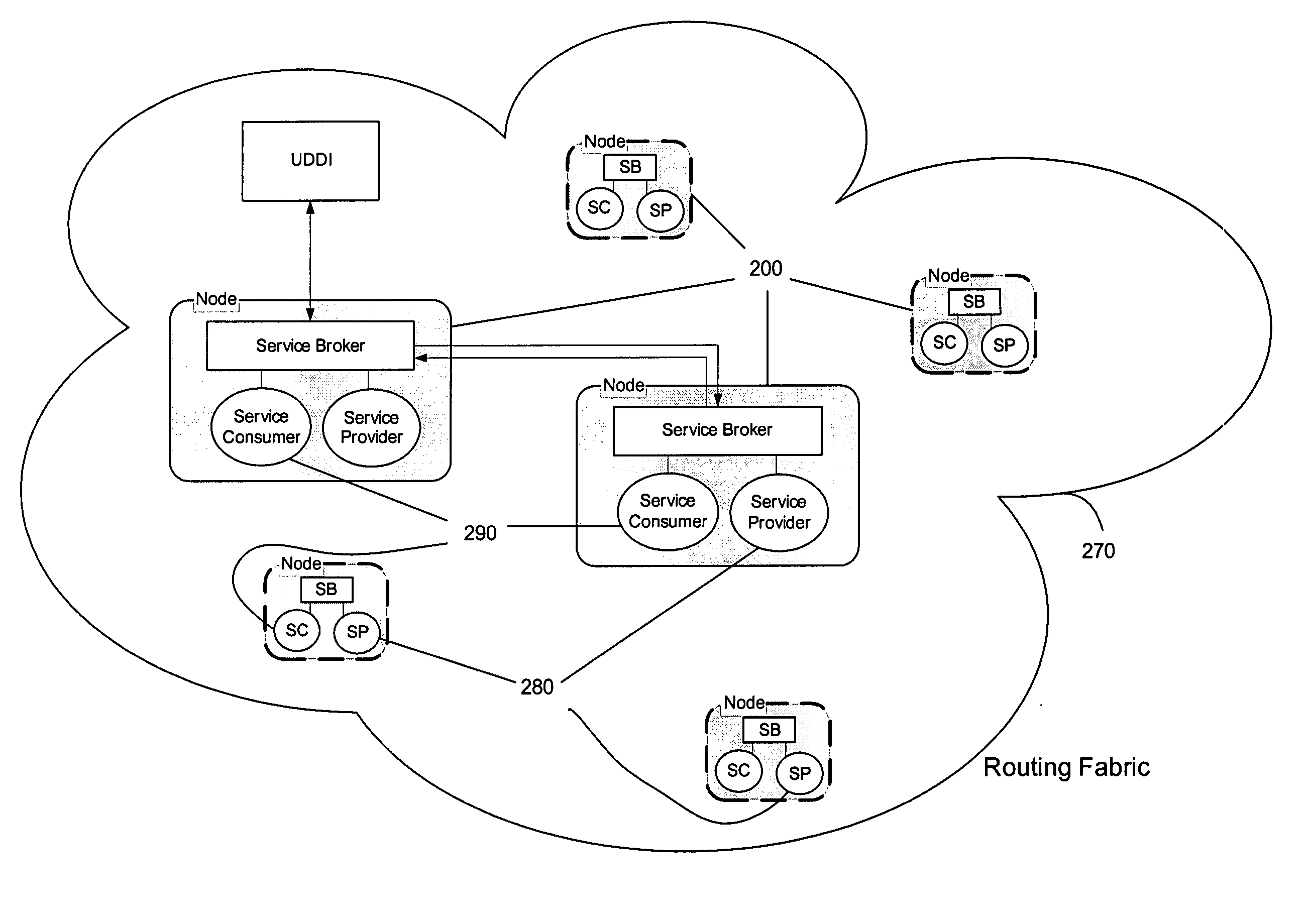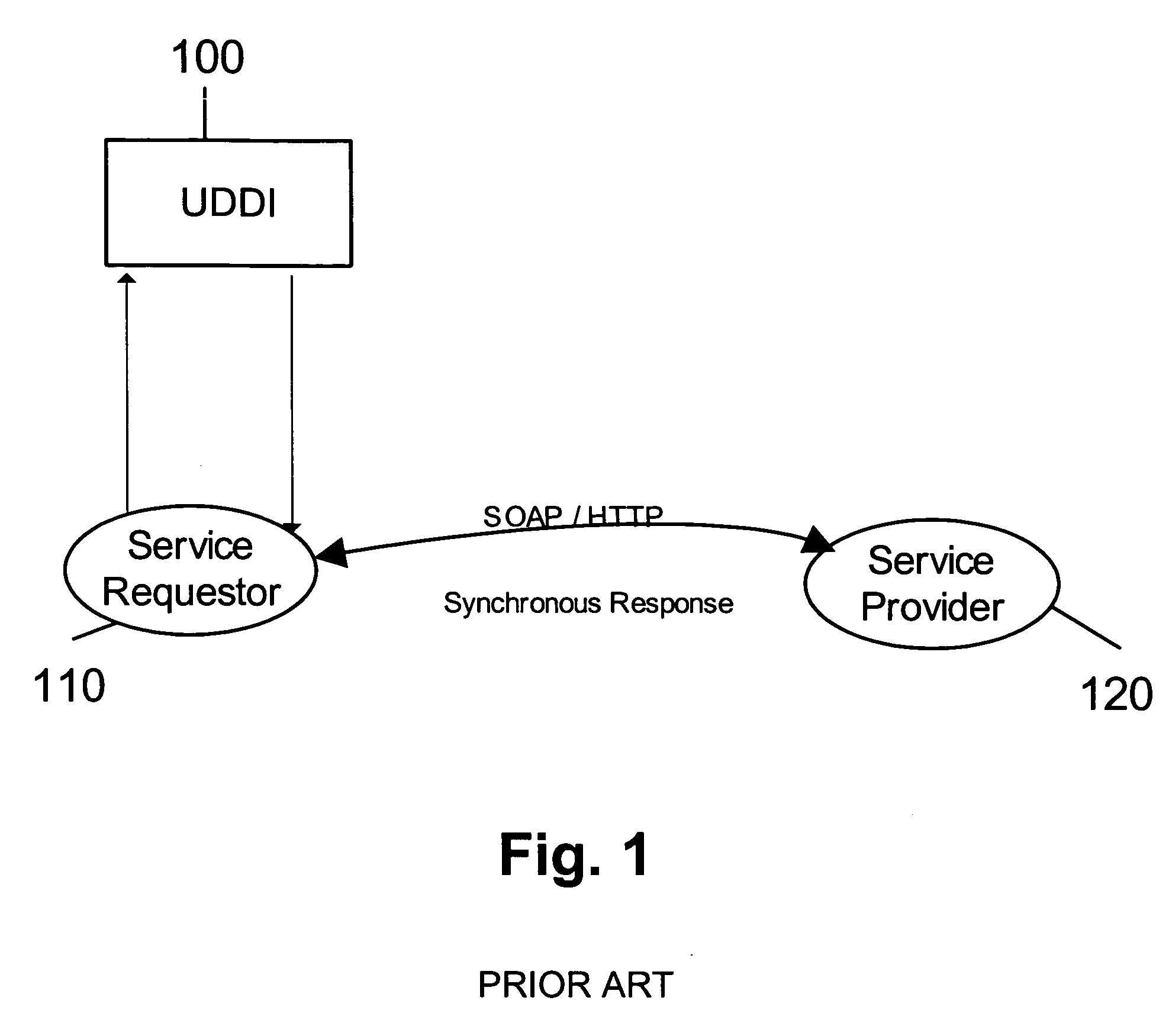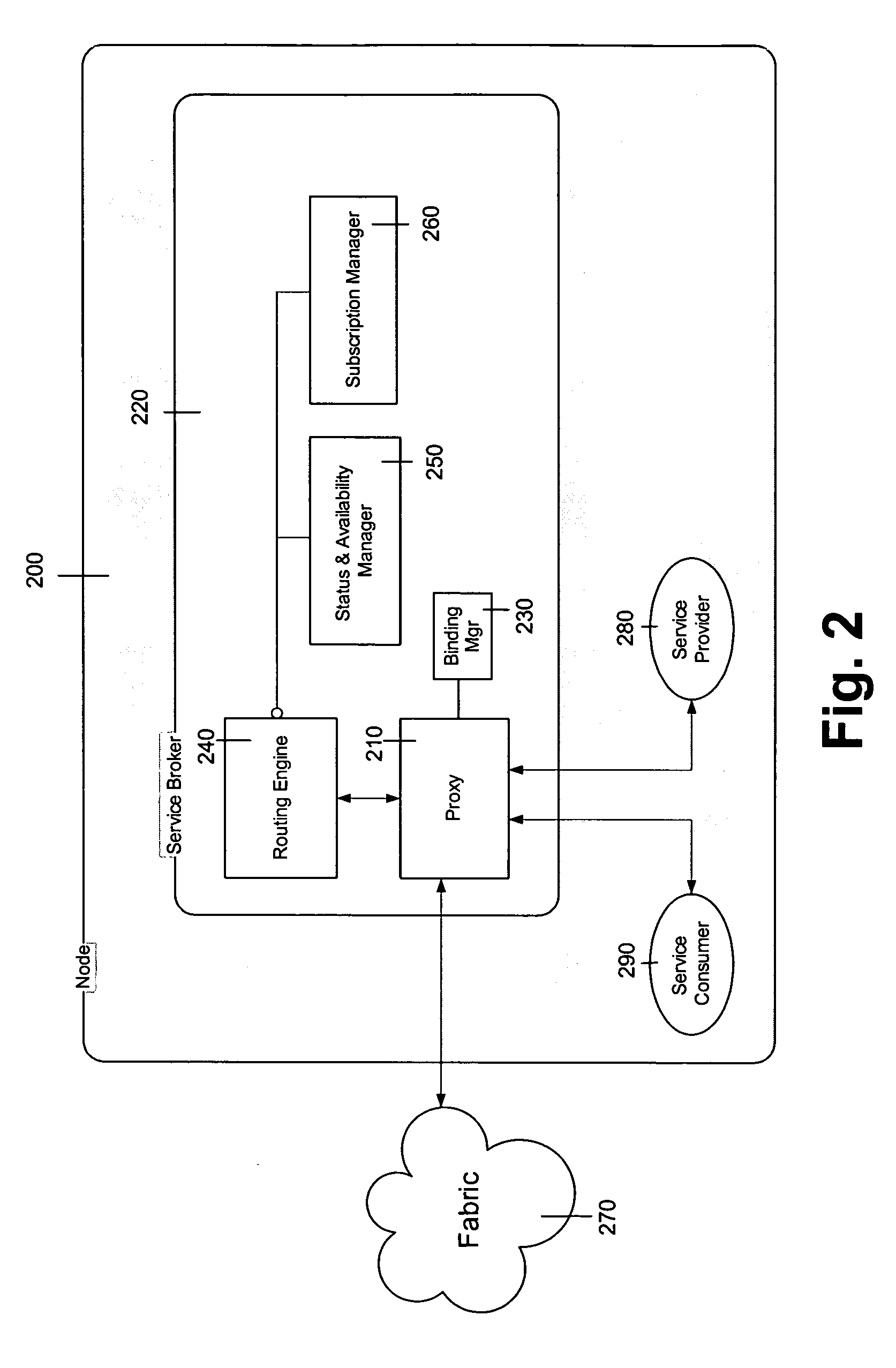Service oriented architectures have existed before in forms, such as
Common Object Request Broker Architecture (CORBA) and
Distributed Computing Environment (DCE), but they were limited by the necessity of tightly coupled interfaces and limited network reach.
Unfortunately, this form of SOA is severely limited, owing to a combination of brokering and transport limitations.
The
consumer must take its chances that the service will be available when a request is made and will only discover that the service is unavailable when a fault occurs.
The Web Services
Distributed Management (WSDM) specification adds some support for historical statistics of a service's availability, but does not satisfy the core requirement to know the status right now, to support dynamic routing of requests to available service instances.
Because the connections described above are inherently point-to-point with persistent bindings, it is not possible adequately to manage
fault tolerance, request prioritization, service level agreements, and
load distribution among multiple services of a given type because there is no central routing mechanism at the
application layer.
In practice, bindings are established at the time of design or implementation, and there is no effective mechanism to coordinate the efforts of multiple services of an equivalent type and context.
If in fact these services' instances are not owned or managed by the same organization and therefore cannot be organized behind a single URL or domain, this method will not work and routing at the
application layer becomes necessary.
Perhaps an even larger limitation of SOAs of this form is imposed by the underlying transport mechanism, HTTP.
Unfortunately, HTTP does not provide capabilities to support routing, registration, subscriptions, or events.
While services can be deployed via this protocol, they will lack many benefits that could be provided by a protocol that offered those other capabilities.
Request / Response services invoked via a message delivered by HTTP will have the
disadvantage of requiring the
consumer to synchronously wait for the response.
This is a tremendous
disadvantage, especially in cases where the service response takes more than a trivial amount of time to construct.
HTTP's synchronous nature and lack of
timeout and retry mechanisms makes it less than ideal for Request / Response service interaction.
However, its limitations are even greater for Publish / Subscribe or other event-driven service interactions.
Because HTTP doesn't natively support NOTIFY, SUBSCRIBE, or INVITE interaction types, these methods must be built in an ad hoc manner on the synchronous HTTP POST interaction.
b) A Service
Consumer that discovers multiple Service Providers via this mechanism will have to choose one instance of a particular type with which it should transact and will have no means to accomplish effect
fault tolerance, load balancing, or
service level agreement (SLA) management.
d) With no way to centralize knowledge about the instances of a
Service Provider type, there is no way intelligently to manage load balancing and SLA management.
g) HTTP does not automatically support Notifications, Subscriptions, Invitations, and other interaction types useful in a distributed application data routing environment, especially where support of Publish and Subscribe mechanisms is required.
However, SIP and SIMPLE in their current forms still have the following shortcomings: a) SIP doesn't support the idea of “equivalent” entities or end points.
b) SIP doesn't natively support efficient application data routing by service type.
d) SIMPLE provides a MESSAGE interaction, but that interaction does not natively support remote service invocation by implementing protocols in the message
payload, such as
SOAP.
However, SIP does not have a native capability to discover dynamically an entity whose home domain is remote, unless that
domain name is included in the invocation address.
f) The SIP
heartbeat provides a mechanism to notify the SIP Registrar, Proxy, and Presence servers that an entity is no longer available; however, it does not natively carry as a
payload additional end point status information that would be critical to the support of SLA,
quality of service (QoS), and load balancing management.
g) SIP messages support “end point priority” content but that content is insufficient to support SLA, QoS, and load balancing Management.
SIP does not natively enable invocation of SIP-based end points via protocols other than SIP.
 Login to View More
Login to View More  Login to View More
Login to View More 


